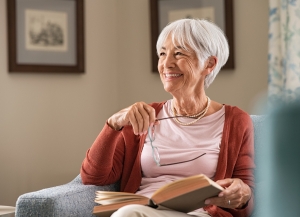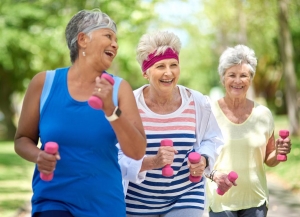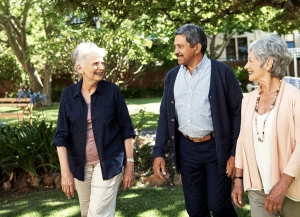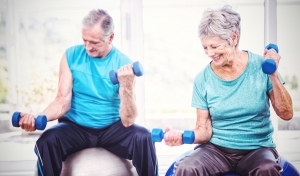Spring is blooming all around us and as soon as the chill leaves the air, you’ll be wanting to step outdoors to recreate. Older adults can keep the spring in their step and prevent falls by maintaining a simple routine of balance and strength building exercises.
If you’ve felt unsteady around your home during the winter months, or if you (or a beloved older family member) have a history of falling or being unsteady, it’s important to step into physical activity with extra caution. Though it is tempting to venture out on a long walk on the first warm day of the spring season, not being physically ready for the increase in physical activity can lead to a potentially devastating fall or other injury. Older adults want to pay attention developing and maintaining balance, coordination, and strength in the legs as well as their core muscles around the midsection.
“Having good balance can help older adults avoid both the frequency and the severity of their falls, reducing the the likelihood they will suffer a serious injury that will lead to a significant and permanent change in their quality of life. That is why exercise is so important on a daily basis!”
~ Michael Levandowski, B.S. EP-C, CDP, Everbrook Exercise Physiologist
The following are basic exercises that senior citizens can be doing year-round, particularly during the weeks and months leading up to spring. If you haven’t participated in an exercise program in quite a while, be sure to get cleared by your physician before you begin. Also, seek the guidance of a certified fitness trainer who specializes in working with older adults.
Strength and Balance Training: Essential for Older Adults
For older adults, certain movements or activities can present cause them to feel unsteady and increases their risk for falling, such as:
- squatting to pick up an item from the floor
- standing up from a chair
- sitting down into a low seat
- walking on uneven surfaces
- pivoting to reach for an object or move out of the way of something
Exercises for Fall Prevention in Older Adults
Sit-to-Stand Exercise
The sit-to-stand exercise builds leg strength and improves body mechanics and balance, which are important in reducing falls. This exercise mimics the movements that are necessary to rise from a seated position and return to that position. Seats of varying heights can be used based on a person’s starting range of motion and ability to move independently or with an assisted device such as a cane or walking stick.
Balance Training Exercises
The ability to stand on both feet, and on either foot independently, is essential for fall prevention as well as for climbing or descending a flight of steps. At home, it’s easy to work on balance training exercises. Just be sure you are nearby a steady piece of furniture, such as a couch or a countertop that you can easily reach out to if you do feel unsteady.
Standing Feet Apart
Start with both feet on the ground, shoulder distance apart. Stand without holding onto anything for 10 seconds, working your way to 1 minute for a set of 3-5 repetitions.
Standing Feet Together
Start with both feet on the ground, shoulder distance apart. Stand without holding onto anything for 10 seconds, working your way to 1 minute for a set of 3-5 repetitions.
Standing on 1 Foot at a time
- 2. 2-3 sets for 10-12 repetitions
- Perform with eyes open and with eyes closed
Yoga or Tai Chi Class
If you are already steady on your feet. Practicing yoga or Tai Chi 1-3 times a week is an excellent way to maintain and even improve your strength, balance and coordination. You might also benefit from a regular workout, twice a week, using strength training equipment under the supervision of an exercise specialist, as noted above.
Fitness and Wellness at Everbrook Senior Living
Senior fitness and wellness are a priority at Everbrook Senior Living. Whether you are part of our independent living community or require assisted living services, our cutting-edge exercise program is led by a certified exercise physiologist who delivers evidence-based, safe and fun exercises designed for older adults. In addition to a focus on individual needs, we also offer a variety group exercise and Wellnes 4 Later Life programs, all designed to help you feel your best at every age and state of life.
We’d love for you to see what the Everbrook family of senior living residences has to offer you. Get in touch with us, today, to schedule a tour.
Additional Resources on Fall Prevention Exercise for Older Adults
National Council on Aging
Tufts School of Medicine “Exercise Decreases Fall Risk for Elderly People”






